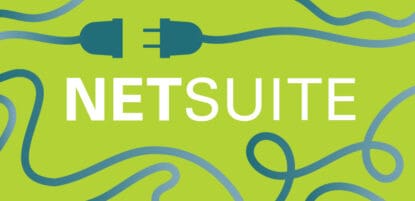Organizations that rely on traditional manual processes are finding more and more that they are struggling to meet the demands of the modern marketplace. This is especially true in the accounts payable department. This team is vital when it comes to maintaining positive relationships with vendors and managing funds effectively. In this article, we discuss how to manage accounts payable effectively, how to structure your AP team, and the importance of automation in improving your AP process.
Key takeaways
- Traditional methods of managing accounts payable are leaving finance teams struggling to meet rising demands.
- By automating these processes, teams can unlock a number of benefits including enhanced visibility and control, streamlined operational efficiency, and stronger vendor relationships.
- MineralTree supports this, integrating directly into existing accounting systems to provide automation for tasks like invoice capture, approval workflows, and payment processes.
What is accounts payable management?
Accounts payable management is the management of payments and debts owed to third-party vendors. However, digging deeper reveals a whole host of moving parts that must be tracked, orchestrated, and handled. The end-to-end accounts payable process includes everything from invoice capture, gathering approvals, updating records and vendor information, initiating invoice payment, and account reconciliation.
What is the goal of accounts payable management?
The goal of accounts payable management is to simplify and streamline processes that make it easier for finance teams to ensure timely and accurate payments, mitigate processing costs, and ensure accuracy. By creating effective management workflows, teams are able to prioritize their time and energy on driving efficiency and productivity.
What does AP management typically entail?
Traditional AP management involves manual processes for many, most, or even all steps. In part this is a holdover from the time before computers and before modern software capabilities and automation platforms. For some organizations, the preference for holding onto manual processes because that’s how they’ve always done it and they believe these processes still work just fine.
These companies may not recognize the hidden costs of allocating employee time and energy to the payment process.
The traditional AP management process includes:
Data entry
When invoices are received, the data must be entered into the accounting system and coded to the right GL accounts. Paper invoices generally require that a team member type information directly into each field from the details on the invoice itself. Even when invoices are received via email, the AP team may print copies and manually re-key this information.
Approval processes
When handled manually, the approval process typically involves moving physical paper from desk to desk for signatures. Of course this makes it subject to delays, especially if the approvers are out of the office, or papers get lost among other documents on someone’s desktop. Email approvals are also subject to significant manual effort, as department must be constantly chased and these communications often fall into a black hole.
Payment execution
Check payments used to be the gold standard. The AP department would need to print out paper checks, get them signed by the controller or CFO, and mail them to their intended recipients. These payment runs would typically be run on a weekly basis. This takes much longer than direct or electronic payments not only because the payer must physically handle the checks and the payee must physically deposit them, but because they must travel through the mail system as well. Additionally, checks have high costs associated with them. Hard costs such as stamps, envelopes, and printing are easy to calculate, but softer costs such as employee time can be even more expensive. Despite these challenges, 33% of companies are still making over half of their payments via check.
What are the benefits of accounts payable management?
Effective accounts payable management can unlock benefits that drive efficiency while also supporting an organization’s broader goals like reduced overhead and boosted efficiency. Some of these benefits include time and cost savings, improved accuracy and control, and stronger vendor relationships, among others. Having a comprehensive plan in place for invoice management can also help with risk and compliance monitoring, since teams have better visibility and can more easily get ahead of potentially problematic incidents.
What are the challenges in managing AP?
The manual processes that many AP departments relied on in the past and continue to rely on to this day present many challenges to AP management.
Human error
One of the biggest challenges is human error. Humans are not machines executing a script. Instead, they are subject to distraction, fatigue, and misunderstanding. Human errors may be introduced into the AP workflow during data entry, payment execution, and any step in between requiring intervention.
It’s easy for errors to occur in any part of the process. When invoices can be sent in multiple formats, it can lead to duplicate payments. When ACH payments are being processed, an incorrect entry can lead to a payment being sent to the wrong bank account. Small mistakes can also lead to fraud, which can put companies at risk.
In fact, 53% of companies, looking to invest in payment automation, expect to see reduced errors. These mistakes are not only time-consuming, but expensive in terms of time spent correcting the oversight. These errors can lead to both vendors and AP teams feeling frustrated.
Time-consuming
Manual processes are also much more time consuming than computer or automated processes. This is because manual processes require humans to physically perform tasks and move papers from point A to point B, whereas computers automate these time-consuming processes. Additional delays appear during downtime when humans are not in the office or can’t be reached.
In fact, 61% of CFOs surveyed noted that improving efficiency was a key reason for accelerating the digitization of their payment process. For those that did implement digitization, 91% said they noticed a positive effect in their overall efficiency.
Difficult to scale
AP departments can easily feel the strain and stress created by business growth. The reason being, with business growth comes more invoices, more vendors, and ultimately more work for the team. While this can easily be met overtime by hiring additional workers, it is not a sustainable option for businesses looking to increase cash flow, expand operations, and optimize workflow all at once. In contrast, by using automation, scaling can happen essentially on demand. BrightView and Simple Mills are both fast growing companies that were able to absorb increased invoice volumes without adding headcount to their accounts payable department.
For companies looking to expand their offices or dealing with acquisitions, a streamlined AP process can make it easier to ensure that bills are paid on time, without straining resources. 61% of companies surveyed who had implemented an AP automation solution noted that they could process more invoices with the same size team.
Strained relationships with vendors
All of the challenges described above combine to create a fourth challenge–strained vendor relationships. Manual processes that create errors and lead to payment delays cause frustration on the other end.
These types of processes can also make it difficult to get questions answered. If a vendor wants to know where an invoice is in the process, they might call only to get the phone passed around as workers struggle to find whose desk a piece of paper is on. Vendors generally don’t want to inherit the errors and delays of an organization’s AP department. They prefer instead for things to be streamlined, predictable, and transparent.
Considerations for today’s AP department
Modern AP departments face many challenges that are no longer easy to meet with traditional manual processes. This has become especially true during the COVID-19 pandemic due to a surge in remote and hybrid work. Strategic partnerships and relationships with vendors are also becoming more and more important.
Embracing a hybrid or remote work model
When the pandemic first struck, many businesses went to remote operations overnight. This presented a huge challenge for AP departments that relied on manual processes. If invoices were mailed to the office, then someone would need to be there to open the envelopes. If checks needed to be printed, signed, and mailed, this also required the physical presence of an employee. The same is true for in-person approvals.
It’s now become quite clear that even though offices have opened back up, remote and hybrid work are here to stay as many have come to realize the convenience it presents. But an AP department can only function remotely if it makes use of automation and digitalization tools that don’t require the physical passing around of papers. In fact, accounts payable was listed as the finance team’s top priority to digitize.
The increased importance of supplier relationships
According to MineralTree’s 2022 State of the AP Report, 71% of companies agreed that their supplier relationships grew more strategically important over the previous year. This number is even higher in certain sectors, with 73% of survey respondents in the healthcare and biotech sectors agreeing.
Paperless processes and digital payments
Not only do paperless AP processes make it easier to adapt to remote and hybrid work environments, but it helps reduce errors and speed up workflows in general. As mentioned above, paper-based processes lead to inefficiencies, take more time, and can strain supplier relationships as a result. Paperless processes don’t face these same issues and are also easier to track and manage.
Electronic payments, which don’t require the paper trail produced by checks, are becoming increasingly popular due to enhanced security and ease of use. In fact, virtual card usage increased by 156% and 71% of companies plan to increase the amount of digital payments they are making.
6 steps to effective AP management through AP automation
As technology rapidly evolves, the pace of business continues to accelerate. By holding onto inefficient manual processes, AP departments can become bottlenecks and points of impedance to the flow and progress of a business. To avoid this, management should consider adopting automation platforms and evolve their processes to better meet the needs of the modern marketplace.
Here are 6 steps that can help your team effectively manage accounts payable with automation.
1. Invoice capture
There are ways to capture invoice information using digital processes regardless of how the invoices are received. Invoices may be submitted directly into an AP platform by the vendor through a vendor portal. Invoices received via email can be routed to a dedicated inbox for direct capture. Even paper invoices can be more easily captured using optical character recognition (OCR) technology. For example, MineralTree combines OCR technology with an additional layer of human review to guarantee 99.5% accuracy on every paper invoice scanned.
2. Faster invoice approvals
Using automated processes allows for much faster invoice approval. Invoices can be routed to the correct approver who can then receive instant notification and submit their approval from any internet connected device–whether they are in the office or on the other side of the world.
3. Document management
With all information in one system, document management becomes much easier. AP team members no longer need to track down whose desk a paper is on or which file something was stored in. Everything is accessible from one centralized location and anyone with access can immediately identify where every invoice is in processing.
4. Payment authorization
The next step is to get invoice payments approved by authorized individuals at your company. With AP automation, your business can easily queue up batch payments with similar priority or payment deadlines to enable approval and payment scheduling based on existing cash management priorities. In addition, payment authorization can be enabled from any device, meaning that even if your authorizer doesn’t have access to their computer, they can easily approve payments from their phone.
5. Payment execution
Once invoices are approved, payment execution can also be handled automatically. Depending upon vendor preference, an ACH payment, virtual card payment, or even an old-fashioned paper check can be sent immediately. Alternatively, payment execution can be strategically scheduled to optimize working capital and cash flow as needed. Either way, all payments are executed from a single workflow, requiring no manual effort or incremental processes.
6. AP analytics
By having all of the details and data in one system, it’s possible to incorporate tools that enable analytics on this data as well. With MineralTree’s analytics capabilities, for example, there is no need to extract information and generate reports using spreadsheets. Instead, these reports can be run instantly on demand. Detailed analytics provide powerful insights that can help businesses optimize cash flow, view internal KPIs and metrics, and improve supplier relationships.
The end-to-end AP process
Using digitization and automation improves accuracy, efficiency, and speed of each individual step, but it also connects the steps together seamlessly in a streamlined end-to-end process. This streamlining also simplifies reconciliation, reduces fraud risk, and improves visibility and control.
Examples of effective accounts payable management
Here are just a few examples of businesses that have achieved effective AP management with the help of MineralTree.
Simple Mills supports invoice volume growth
A leading provider of better-for-you foods that also taste great, Simple Mills’ small AP team struggled with processing a growing volume of invoices using their previous AP system. By moving to MineralTree, however, the company achieved full invoice-to-pay automation and the ability to process over 1,000 invoices each month. In addition, Simple Mills achieved ROI and low TCO by incorporating SilverPay virtual card payments into its payment mix.
House of Cheatham unlocks more control in its AP process
As one of the oldest manufacturers of personal and beauty care products in America, House of Cheatham was facing difficulties meeting its extremely high standards for finance and accounting with manual AP processes. After analyzing half a dozen AP automation vendors, the company chose MineralTree for robust functionality and support. Implementation was fast, easy, and successful and brought Cheatham time savings, productivity enhancements, and improved morale.
Quartzy improves visibility in its AP workflow
A leading science product distributor, Quartzy’s business model relies on a high number of suppliers, which means relationships with those suppliers are vital. Seeking to evolve its time-consuming AP processes and improve real-time visibility, the company turned to MineralTree. MineralTree not only seamlessly integrated with Quartzy’s existing NetSuite ERP system, but offered improved reporting capabilities and powerful PO matching. Implementation was also smooth, requiring little to no help from IT.
BrightView scales its AP department’s capabilities
Outpatient addiction treatment provider BrightView Health struggled with manual AP processes that threatened the business’s ability to grow. By selecting MineralTree for its AP automation solution, the company was able to process invoices much faster, view all data in one place, and improve productivity. Moreover, audits that used to take hours now only take minutes due to MineralTree’s analytics capabilities.
Better AP management through MineralTree
Accounts payable workflow automation can help teams better manage their AP process. MineralTree integrates into existing systems to empower organizations to take control over AP processes, helping to reduce costs, drive efficiency, and improve financial decision-making by automating key tasks and processes. In implementing automated processes around things like invoice capture, approval workflows, and payments, teams can streamline accounts payable management while also improving security and boosting visibility into cashflow.
With MineralTree’s TotalAP, teams can digitize the entire process to improve relationships with vendors, capitalize on early payment discounts and scale your AP team’s capabilities. To learn more, request a demo today.
Frequently asked questions about accounts payable management
How do you properly manage the accounts payable process?
Best practices for properly managing the accounts payable process include centralized invoice processing, employee training, establishing clear approval workflows, running regular audits, open vendor communication, and automation.




